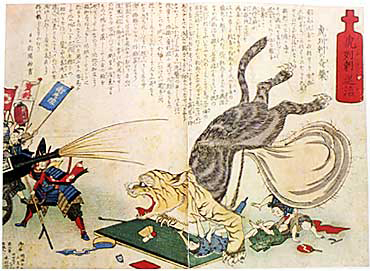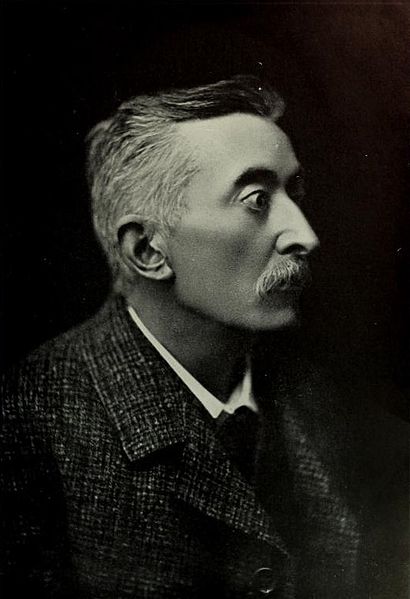 |
| James Curtis Hepburn |
Life of Hepburn
"Anata wa kore wo yomemasuka?" Today, we always use this kind of typing in our daily lives, and this way of describing Japanese is understandable for both Japanese learners and non-Japanese learners. As for Japanese typing, this type of typing is always used to type Japanese words and sentences. However, who invented this useful and effective way of describing Japanese language? Some people might have heard his name: “James Curtis Hepburn”.
James Curtis Hepburn was born in 1815. After he earned a master’s degree, he became a physician. When he came to Japan as a medical missionary, he opened a clinic in Kanagawa. In addition to his clinic, he founded the Hepburn School. Also, he compiled a Japanese-English dictionary while he was in Japan. In the third edition, he adopted a new system of Romanization of Japanese language, which is widely known as “Hepburn Romanization”. However, how did he collect Japanese words and complete his dictionaries? Weren't there any difficulties collecting Japanese words and describing phonological information of Japanese?
In fact, Hepburn had knowledge of kanji because he had been in China for some years before coming to Japan, and it seemed that it was relatively easy for him to learn Japanese language because Chinese and Japanese have some common points between their languages. However, he mentioned that he had a lot of difficulties learning Japanese because that language was much different from Chinese. Thus, Hepburn collected Japanese words from Japanese people, classified those words, studied grammatical rules, idioms, etc. and finally he summed up over 20,000 entry words with Hepburn Romanization system.
Summary of Discussion
We discussed three points of Hepburn’s accomplishments:
- Why did he found Hepburn School?
- What was the motivation for him to compile Japanese-English dictionary? and
- What are the positive and negative points of Hepburn Romanization?
The second discussion was about “What was the motivation for him to compile Japanese-English dictionary”. One of the members in my group mentioned that he wanted to spread Japanese language to foreign countries because the person assumed that there were few Japanese-English dictionaries so it seemed difficult to learn Japanese things. Another opinion was that Hepburn compiled the dictionary for himself to learn Japanese. Since he had a lot of difficulties learning Japanese language, he studied Japanese hard. As a consequence, he accidentally completed the dictionary.
The last discussion topic was “What are the positive and negative points of Hepburn Romanization?” This topic was controversial. According to our discussion, there are some positive points of Hepburn Romanization, but interestingly more negative points are mentioned. One of the positive points is that Hepburn Romanization makes it easier for Japanese learners to learn Japanese language because they can learn its pronunciation by looking at Romanization. Furthermore, it also makes it easier for Japanese people to learn other languages that use Romanization because Japanese people who know this system can understand the pronunciation of their mother tongue, and they can adopt it when they learn different languages.
However, as I mentioned above, it seemed that there are more negative points of Hepburn Romanization. One of them is this system made Japanese people learn Romanization in addition to hiragana, katakana, and kanji. This made Japanese language very complicated. What I thought interesting was that this Hepburn Romanization would generate different sounds, depending on people who read. That is, if people whose mother tongue is English see the sound “/ch/”, they would pronounce it as a fricative sound as in China or Chin. However, if those whose mother tongue is Chinese see it, then they would pronounce it as an aspirate sound (strong /ch/). This phenomenon is caused by speakers’ native languages. Thus it seems impossible that Hepburn Romanization can adapt to all human languages.
Reflection on person and project
Through this project, I learned a number of things, about Hepburn, Japan at that time, the origin of Japanese-English dictionary, lessons that we can learn from Hepburn, and so forth. Before taking this class, I wasn't interested in history so much, honestly. However, once I started to study about Japanese history, I found that our current life is based on what our ancestors did in the past. The reason why people in Japan succeeded in developing Japan and Japan became one of the most developed countries came from the history of Japan. They learned everything including good and bad from the past, and they tried to follow good points, and tried to improve or never repeat bad things.
Talking about Hepburn, he gave massive knowledge to Japanese people. Not only did he give medical knowledge, but also the Japanese-English dictionary which enables us to study foreign languages easily than the past. Some surprising things are that these seemingly recent inventions or events happened 200 years ago. I stereotypically feel that the life at that time was not so stable to live comfortably, so people couldn't afford to spend much of their time studying. Hence I believe that those who contributed to Japan, such as Hepburn whom I researched, really contributed and that we have to appreciate their works. I’m sure that things in this world are continuing to be improved and made more sophisticated. Namely, we contemporary people have to inherit our ancestors’ works and make them more sophisticated. I believe that we live in more comfortable and wealthier world than the past era, so we can inherit and improve their works if there are some points that we can do. Furthermore, what we can learn from Hepburn is that it is more important to do anything for others without reward. Hepburn treated people for free, even if he did some surgery, he didn't get any money from people. Meiji Gakuin University, which is established by Hepburn, had a lesson “Do for others”. We also should follow his lesson.
The project this time was composed of a short presentation and discussion. Because I have to spare time for discussion, I didn't make long presentation, but rather, I made three discussion questions so that the audience or participants can join the discussion and talk a lot. Since I didn't prepare for long presentation, I needed less time for practicing presentation than last time, but instead, I used more time for gathering information about the person for whom I made presentation so that I can answer any questions or doubts that the listeners had. During my presentation, I thought that I need more slides of my presentation to tell more details so that audience can get knowledge of him and join the discussion more smoothly. In contrast to my thought, every member in my group joined the discussion very actively. Sometimes after one member in my group told her opinion, one of other members asked her about what she said. This way of discussion was good and valuable. Before discussion, I was worried that this discussion would be one-way communication, like I asked questions, one member answered, and then finished. However, this two-way communication made the discussion more controversial. I have to thank them for making the discussion like that.
There are some good points and bad points in my project. One of the good points was I prepared for questions that audience would have. Although they didn't have questions, I used that knowledge and started to talk in order to not make quiet or silent atmosphere during discussion. I heard that this utterance gave them additional knowledge of the person, which made them easy to join the discussion. This is a good point but also it implies that this is a bad point. “The additional information made it easy for them to join the discussion” meant that they didn't get enough information from my presentation, I should have included more information in my presentation. Also, some people feel that my English was fluent, while others feel too fast. Presentation is not for me, but for listeners, so I should have spoken a little bit slower so that every listener of my presentation could understand what I said. Through this project, I got much knowledge of my focus person, confidence in presentation skills, delivering discussion, and so on. All of these achievements are thanks to my teacher Caroline and my peers. I would like to say “thank you” to them. Thank you.
Reference
Meiji Gakuin University. (n.d.). James Curtis Hepburn. Retrieved from
http://www.mg150th-whoswho.jp/atc01.html
Meiji Gakuin University. (2014). The Birthplace of James Curtis Hepburn. Retrieved from
http://www.meijigakuin.ac.jp/guide/history_en.html
Michio, T. (n.d.). James Curtis Hepburn. Retrieved from
http://www.bdcconline.net/en/stories/h/hepburn-james-curtis.php
Meiji Gakuin University. (n.d.). James Curtis Hepburn. Retrieved from
http://www.mg150th-whoswho.jp/atc01.html
Meiji Gakuin University. (2014). The Birthplace of James Curtis Hepburn. Retrieved from
http://www.meijigakuin.ac.jp/guide/history_en.html
Michio, T. (n.d.). James Curtis Hepburn. Retrieved from
http://www.bdcconline.net/en/stories/h/hepburn-james-curtis.php


















